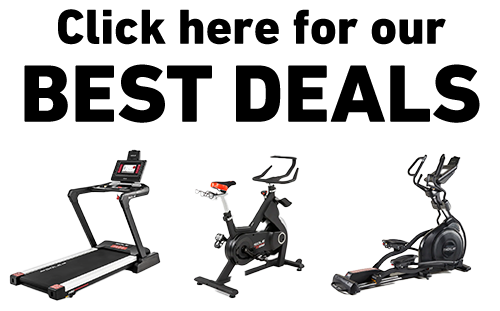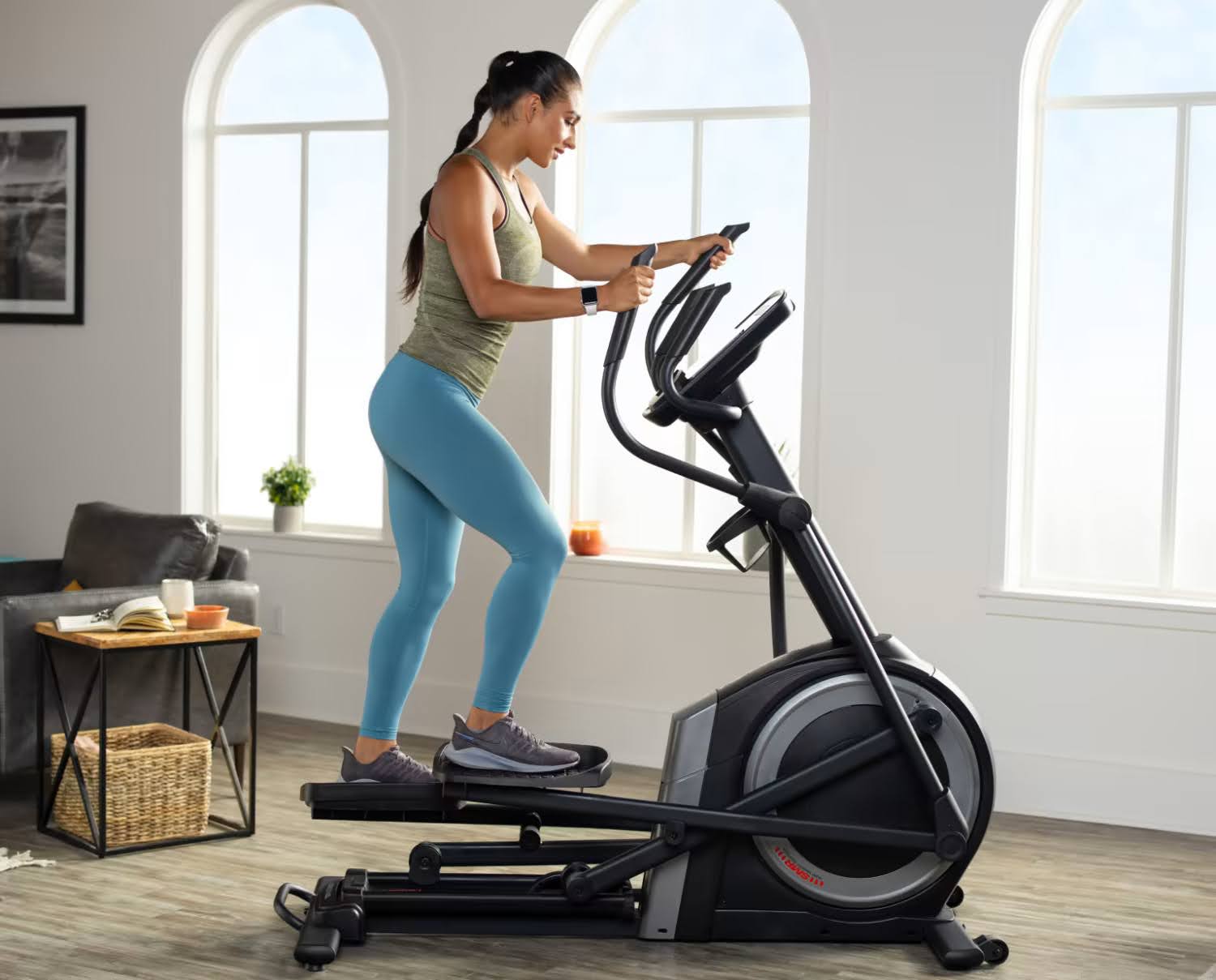Key Takeaways
- Women should aim for a waist circumference below 80 cm (31.5 inches) to avoid increased health risks.
- Men should target a waist circumference below 90 cm (35.5 inches) to reduce health complications.
- Walking briskly for 2.5 hours a week can significantly reduce belly fat when combined with proper nutrition.
- Longer treadmill sessions of 60–90 minutes twice a week can enhance overall fat loss and cardiovascular conditioning.
- SOLE treadmill’s 15-level incline precision, decline capability, and Cushion Flex technology enables more intensive and joint-protective training that maximizes calorie burn beyond basic treadmill capabilities.
The Science Behind Treadmill Walking for Fat Loss
Walking on a treadmill can be an effective component of belly fat reduction and overall fitness improvement. It's accessible, easy to incorporate into your daily routine, and can contribute to results when combined with proper nutrition and realistic expectations.
|
Award-Winning Commercial-Grade Treadmills for Your Home
Why Choose SOLE: ✓ Commercial-grade steel frames with up to 4.0 HP motors 30-Day Money-Back Guarantee: Love it or return it, no questions asked. |
Why Belly Fat Matters

Visceral abdominal fat poses significant health risks beyond aesthetic concerns, making its reduction a priority for long-term wellness.
Belly fat isn't just an aesthetic concern; it's associated with health risks. This type of fat, referred to as visceral fat, sits around your internal organs. The more visceral fat you have, the higher your potential risk of health issues like cardiovascular disease, type 2 diabetes, and metabolic syndrome. Monitoring your waist circumference can be a useful indicator of abdominal obesity and associated health risks.
Healthy Waist Circumference Guidelines
For Women: Increased risk starts at ≥ 80 cm (31.5 inches), while a substantially increased risk is at ≥ 88 cm (35 inches).
For Men: Increased risk begins at ≥ 90 cm (35.5 inches), and a substantially increased risk is at ≥ 102 cm (40 inches).
These measurements can vary based on ethnicity and individual health factors, so they serve as general guidelines rather than absolute thresholds.
Potential Health Consequences of Excess Abdominal Fat
- Cardiovascular Concerns: Increased waist circumference is associated with higher risks of heart disease due to its correlation with elevated blood pressure, cholesterol levels, and inflammation.
- Type 2 Diabetes Risk: Abdominal obesity is considered a significant risk factor for insulin resistance, which can contribute to type 2 diabetes development.
- Metabolic Syndrome: This condition, characterized by multiple metabolic factors (like high blood pressure, high blood sugar, and abnormal cholesterol levels), is often associated with excess abdominal fat.
- Other Health Risks: Increased belly fat can also increase the risk of certain cancers and overall mortality rates.
Walking Duration Recommendations

Research-based duration guidelines provide a framework for effective belly fat reduction through consistent treadmill training.
General Guidelines
Research suggests that 2.5 hours of brisk walking per week (approximately 20–30 minutes per day) may significantly contribute to lower risks of type 2 diabetes.
Longer Sessions for Enhanced Results
For potentially more pronounced results, engaging in longer sessions of 60 to 90 minutes two days a week may further enhance overall fat loss, as it allows the body to utilize fat as an energy source more effectively during extended exercise periods.
Intensity and Techniques
Moderate to High Intensity Training
Incorporating moderate to high-intensity intervals into your treadmill workout can potentially boost your calorie burn. One proven method is interval training, which involves alternating between periods of high intensity and lower intensity.
For example, you can increase pace for 30 seconds and then walk at a moderate pace for a minute.
Another way to increase intensity is by adjusting the speed and incline of the treadmill. Walking at a faster pace or at a steeper incline requires more effort, which means you'll potentially burn more calories and contribute to fat loss.
High-Intensity Interval Training (HIIT) Protocols
High-Intensity Interval Training, or HIIT, involves alternating between periods of high-intensity exercise and lower-intensity recovery, which can increase calorie burn and may help keep your metabolism elevated after your workout.
Effective HIIT Techniques Using SOLE Features
- Interval Pace Changes: Increase pace for 30 seconds, then walk at a moderate pace for 1 minute. Repeat this cycle for 20–30 minutes
- Speed Variations: Walk at a brisk pace for 2 minutes, then increase the speed to a jog for 1 minute. Continue alternating for 20–30 minutes
- Incline Intervals: Walk at 0% incline for 2 minutes, then increase the incline to 5–15% for 1 minute. Repeat for 20–30 minutes using SOLE's precise incline controls
Incline Walking Benefits
Walking at an incline engages more muscles, particularly in your legs and core, and increases calorie burn. A popular method is the 12-3-30 workout: walking at a 12% incline at 3 mph for 30 minutes. This routine can be effective for building endurance and contributing to weight loss goals.
Incline walking may also help in strengthening your core muscles because it requires more effort from your abdominal muscles to maintain balance and stability. Over time, this may contribute to a stronger midsection.
Alternative Training Method: Backwards Walking Benefits
Walking backward on a treadmill may seem unusual, but it offers specific benefits: it engages different muscle groups in your glutes, hamstrings, and calves compared to forward walking.
Backward walking also challenges your balance and coordination, which can enhance your overall stability and may help reduce the risk of falls. It's an interesting way to vary your routine and keep your workouts engaging.
How to Walk Backwards Safely
To walk backward on a treadmill, start by setting the speed to a slow pace, around 1–2 mph. Hold onto the handrails for balance as you step backward, ensuring each step is controlled and deliberate.
Begin with short sessions of 5–10 minutes and gradually increase the duration as your confidence and balance improve.
Consistency and Realistic Expectations

Sustainable progress requires consistent training schedules combined with realistic timelines for visible results.
Aim for 150 to 300 minutes of moderate-intensity activity weekly to support overall fitness and fat loss goals. Maintain consistency, but avoid overtraining as that can lead to fatigue, injuries, and burnout. Adequate time for rest and recovery is essential for long-term success.
Tips to Maximize Results
Proper Form Fundamentals
- Keep your head up and look forward, not down at your feet
- Engage your core and keep your back straight
- Use a natural arm swing, with your elbows bent at 90 degrees
- Take even, controlled steps, landing on your heels and pushing off with your toes
Strength Training Integration
Incorporating strength training into your workout routine may accelerate fat loss and muscle development. Strength training helps build lean muscle mass, which increases your resting metabolic rate, potentially helping you burn more calories throughout the day.
Focus on exercises that target your core, such as planks, Russian twists, and leg raises. These exercises can complement your treadmill workouts and may help you achieve core strength goals.
Essential Nutrition Considerations
Maintain a balanced diet rich in whole foods, lean proteins, healthy fats, and complex carbohydrates. Focus on nutrient-dense foods that provide the energy you need for your workouts and support overall health.
Stay adequately hydrated throughout the day, especially before, during, and after your treadmill sessions. Dehydration can contribute to fatigue and may hinder your progress. SOLE treadmills feature convenient bottle holders so you can maintain hydration during exercise sessions.
Consider reducing your intake of highly processed sugary foods and beverages as part of an overall healthy approach. These foods are often high in calories and may contribute to weight gain. Instead, opt for whole food sources of nutrients, like fruits, and focus on minimally processed foods.
Setting Realistic Expectations for Results
Walking on a treadmill can be an effective component of belly fat reduction when combined with proper nutrition, adequate sleep, and overall lifestyle changes. Incorporating brisk walking, interval training, and incline walking may help optimize your results as part of a comprehensive approach.
Achieve Your Belly Fat Goals with SOLE's Advanced Treadmill Technology

SOLE treadmills provide the advanced features needed to maximize your walking workouts beyond basic treadmill capabilities.
SOLE treadmills feature a range of capabilities that can help you customize your workout to support your fitness goals. Foldable models like the F63 and F65, and non-foldable models like the ST90 and TT8 come with 15-level incline adjustment and various workout programs to keep your routine challenging and engaging.
Select models like the F85, F89, and TT8 also include 6 levels of decline for comprehensive terrain simulation.
SOLE's Cushion Flex Whisper Deck technology reduces joint impact by 40%, allowing you to sustain longer fat-burning sessions without the knee and ankle stress that limits other treadmill training.
Combined with our commercial-grade motors up to 4.0 HP, you can maintain consistent intensity throughout 60-90 minute sessions essential for optimal fat utilization.
Our advanced consoles track calories burned, distance covered, and workout intensity—essential metrics for monitoring your belly fat reduction progress.
Our treadmills come with our free SOLE+ App, which has 3,000+ guided workouts including specific programs designed for core strengthening and fat burning that take the guesswork out of effective training.
Frequently Asked Questions (FAQs)
What is the best walking speed for fat loss?
The most effective walking speed for fat loss is usually between 3 to 4 miles per hour. This pace is brisk enough to increase your heart rate and calorie burn, making it potentially effective for contributing to fat loss when combined with proper nutrition.
Can treadmill walking alone help in toning abs?
While treadmill walking can contribute to reducing overall body fat, including abdominal fat, combining it with targeted core exercises typically yields better results for core strength development. Exercises like planks and leg raises target the abdominal muscles more directly.
How does incline walking benefit belly fat reduction?
Incline walking increases muscle engagement and calorie burn, which can help contribute to reducing belly fat more effectively than flat surface walking. It also requires more effort from your core muscles, which may help strengthen your abdominal muscles.
Are there specific treadmill workouts for beginners?
Yes, beginners can start with a gentle routine like walking at a moderate pace for 20–30 minutes. Gradually, they can incorporate intervals and inclines as they build endurance and strength.
Beginner-Friendly Progression:
- Start with a 5-minute warm-up at a slow pace
- Walk at a moderate pace (3–4 mph) for 15–20 minutes
- Cool down with a 5-minute slow walk
How long before I see results from treadmill walking?
Results can vary significantly based on individual factors, but most people start noticing improvements in their fitness levels within 4 to 6 weeks of consistent treadmill walking combined with proper nutrition and adequate sleep. Visible changes in body composition may take 8–12 weeks of consistent training and nutrition habits.
SOLE treadmills allow you to track your progress using the comprehensive console metrics with a focus on performance improvements (speed, duration, incline tolerance) rather than just aesthetic changes.



Leave a comment
This site is protected by hCaptcha and the hCaptcha Privacy Policy and Terms of Service apply.